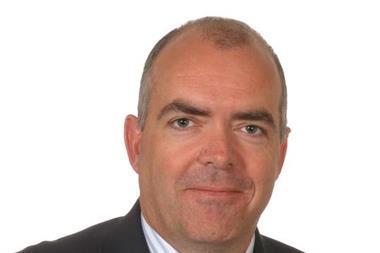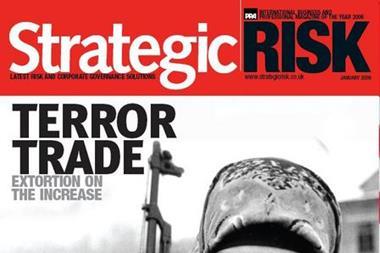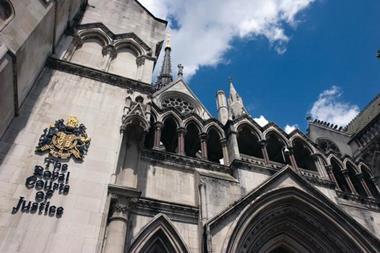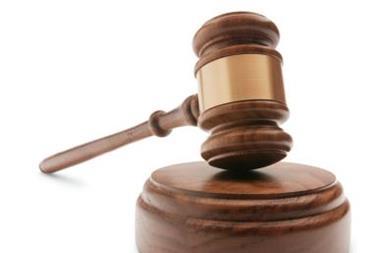Three years after it was enacted and we are yet to see a trial, let alone conviction. Sally Roff and Mary Lawrence explain what has changed.
Three years since the new Corporate Manslaughter and Homicide Act was enacted, and we are yet to see a trial get off the ground let alone a conviction.
The only case to have made it anywhere near the courts is R v Cotswold Geotechnics (still ongoing but on hold for now), a case that a sceptic might say is exactly the sort that would have led to prosecution under the old common law rules of gross negligence manslaughter -- and have stood an equal chance of conviction as under the new Act.
Small companies have never been the problem for the police in investigating or for the Crown Prosecution Service (CPS) in prosecuting and successfully convicting under the old common law. As long ago as 1994, a conviction of Peter Kite, an individual, and his company "OLL Limited" in relation to the Lyme Bay Canoe disaster where four children on a canoeing activity holiday drowned, was obtained by the CPS. More recently, last year saw a successful conviction of the owner of 1-4-You Coach Travel and Airports, whose unroadworthy coach vehicle caused the death of two passengers.
Likewise, the call for individuals to be prosecuted has been a public concern that has arguably been adequately met in the past, at least in so far as the person directly linked to a grossly negligent accident - the junior doctor at Southampton University Trust who failed to spot the symptoms of toxic shock syndrome, or the lowly "assistant bosun" on the P & O Ferry crossing to Zebrugge who failed to close the bow doors on departure, leading to the flooding of the decks and eventual capsize. These individuals have been held to account and the old common law has provided a suitable mechanism for doing so.
The failure of the old law, however, was in the case of disasters involving large (or even medium sized) companies and organisations where the public felt that managers, directors and the company itself were at the root of the problems but could hide behind the ‘corporate veil’ and avoid prosecution – P & O Ferries in Zebrugge, the large train companies in the Hatfield train crash, the owners of the Piper Alpha oil rig. It was hoped that the new Act would address public concern about the inability to bring such companies to court and rectify the failings of the old law.
So what should an organisation be doing to protect itself and prevent it from coming within the scope of the new law in the event of a tragic accident? Despite the lack of a Corporate Manslaughter prosecution to date, the message to organisations and directors is that any investigation into a death which leads to findings of gross failings by an organisation and its systems or management will lead to criminal investigation by the authorities and a prosecution under the new Act.
Organisations should therefore:
1. Review the adequacy of their structure and consider whether sufficient input into health and safety and its enforcement is taken from the top
2. Consider whether the systems and policies in place are fit for purpose and adequately assess risks associated with personal injury or death and that those risks are reduced accordingly
3. Ensure that responsibility for enforcement of systems and procedures is in place – whether by way of supervision at a senior level or allocation of specific responsibilities in a flatter structure.
4. Check that systems are being followed – spot checks and more formal audits are crucial for a manager or director to be able to have confidence in compliance. Where non compliance issues are raised – to include condoned unsafe practices, inadequate training or problems with the system in the first place which makes it impractical, they must be addressed and the follow up action (remedial, disciplinary etc) should be timely.
The HSE and the Institute of Directors have published specific guidance on the role of a director in leading safety within an organisation and help is at hand from safety organisations such as IOSH, RoSPA and numerous health and safety consultants. Ultimately, however, it is the organisation's manager or director who is best placed to assess the adequacy of safety within a business, review and test it to ensure risk is minimised within the business either directly or through its safety team.
What is certain is that when a large organisation is eventually brought to account under the new Act, it will face extensive press coverage, fines exceeding £500,000 and possible formal sanctions requiring a "name and shame" campaign in the press and/ or other remedial orders.
Is the risk of prosecution under the Corporate Manslaughter Act one that many organisations can afford to take? Can any organisation take the risk of negative PR and substantial financial penalties? Don't leave it to chance: check that systems are robust and being followed.
Sally Roff is a partner and Mary Lawrence, an associate, in the Safety, Health and Environment Group at national commercial law firm, Beachcroft LLP. They regularly advise corporate clients not only following incidents and in prosecutions, but also from a compliance and preventative angle.



















